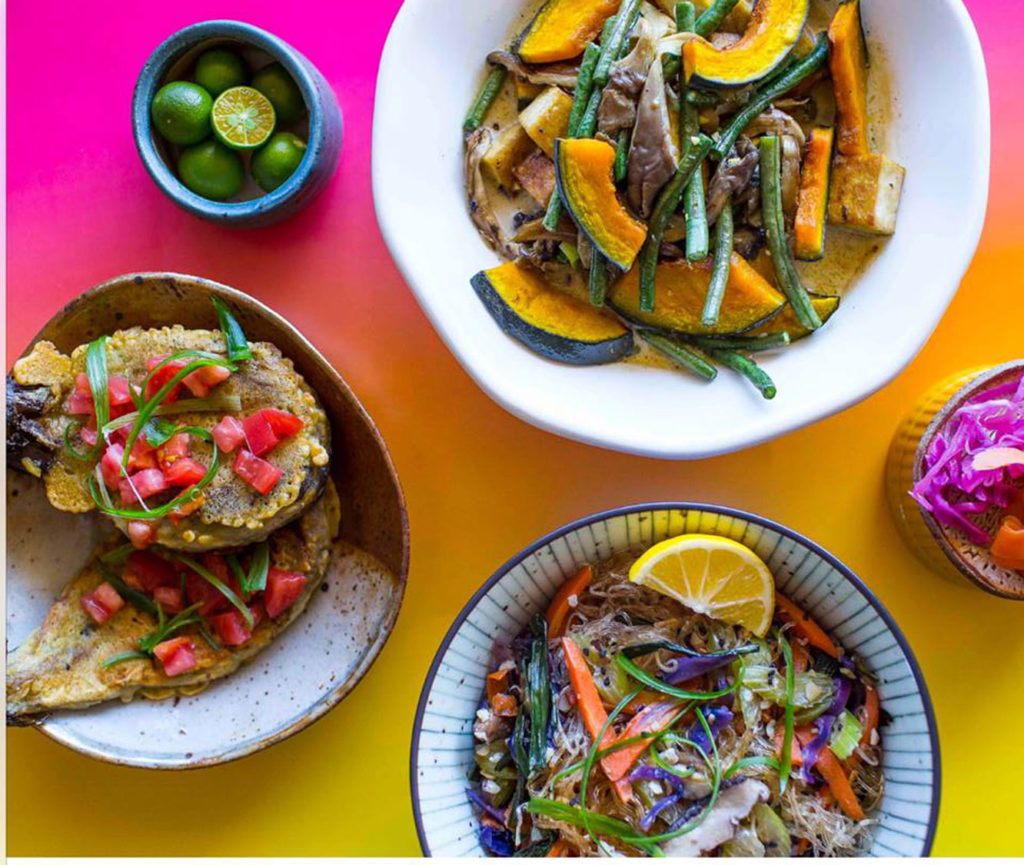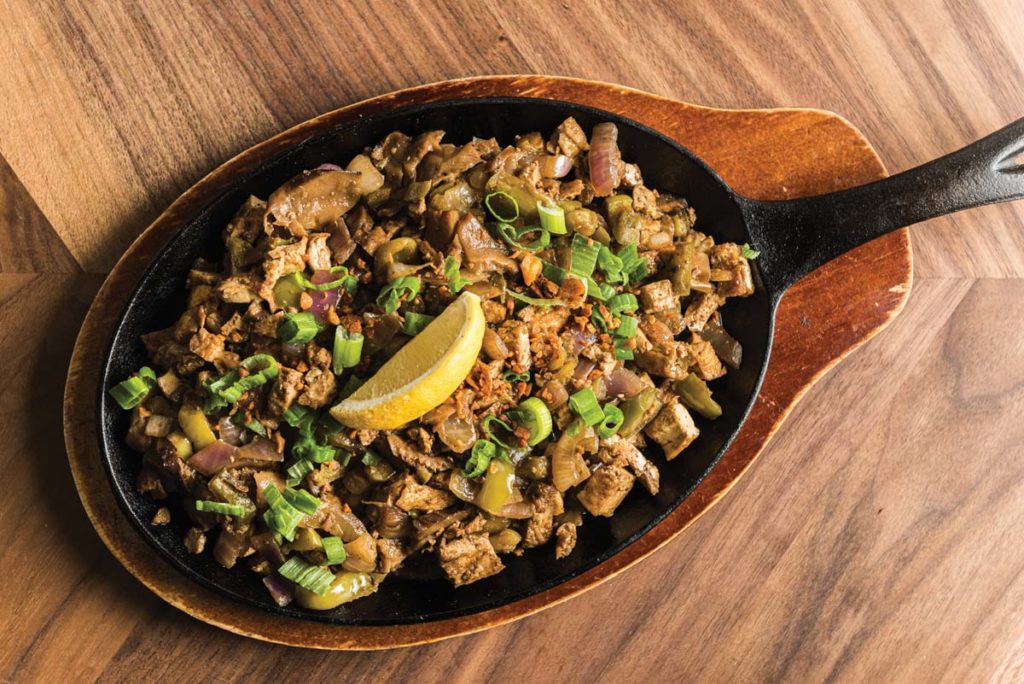With the new year, most people see it as a fresh start and will make a list of resolutions, mainly centered on self-improvement. A common resolution revolves around being ‘healthier,’ whether that means a more active lifestyle, eating better or losing weight.
In the weeks following, many tend to report that they have not stuck to their goals because of factors like losing motivation, being too busy, or not having support. Experts will agree that the best approach is to start small with simple swaps and focus on one change at a time as to not get overwhelmed and discouraged, according to the American Psychological Association.
For those considering a lifestyle change — whether to a vegetarian or keto diet — there are a lot of tips and resources available in order to start and sustain it. And for those who think it’s not possible to eat Filipino food under new circumstances, the Asian Journal spoke to several Fil-Ams who share insights that prove otherwise. (With any health-related change, it’s advised to consult a doctor before modifying your diet.)
Vegetarian
A vegetarian diet is defined as eating vegetables, fruits, grains, nuts and sometimes eggs or dairy products depending on one’s personal level of strictness. The common misconception of Filipino food is that it is all meat-based and that it’s difficult to just find plant-based dishes.
Chef, food educator and advocate Aileen Suzara told the Asian Journal in a previous interview that the unhealthy perception of Filipino cuisine is relatively recent as the roots of the food culture have been plant-based and unprocessed. “Our people were among the world’s most skillful vegetable farmers, and our traditional foods reflect this agrarian heritage. I think of this when I hear comments that ‘Filipinos don’t eat vegetables,’” she said.

For those who are thinking of going meatless (or at least plan to eat more vegetables) but are scared of how it will taste like, Suzara has a few ideas. “If people are unfamiliar with ingredients, or have had them poorly prepared, it can seem like these foods must be bland or boring. Luckily, vegetables can be just as — and sometimes even more than — flavorful and creatively prepared as meat. I’d recommend people try an approach of ‘more’ vs ‘elimination,’ she said and continued, “For example, ‘how can I focus on bringing in more colors, textures, and varieties of vegetables into my daily meals, vs focusing on what to take away?’”
She suggests dark leafy greens, like kamote greens, kangkong and bok choy, because of the taste, nutritional value and can cook quickly. Adding seasonings like calamansi or lemon, chilis and garlic help add to its flavor profile. “Making small steps is [the] important thing to getting started! Having a buddy system — a friend or family members — can be motivating and make the process fun,” Suzara said.
Vegan
Veganism goes beyond the traditional vegetarian diet by abstaining from eating or using animal products altogether. There are many reported benefits of going vegan, such as eating more greens which can reduce the risk of heart disease, Type 2 diabetes and cancer or a personal way of helping better the environment.
Having vegan Filipino food is easier now with restaurants like Nick’s in the Bay Area preparing adaptions of traditional dishes and educating the community that it’s possible to still enjoy the cuisine without animal products. For those who still want Filipino ice cream, there’s also Los Angeles-based Cheeri Cheeri, which has flavors like buko pandan and puto bumbong.

“My advice for my fellow Fil-Ams is not to be intimated to make the switch. You will be surprised at how easy it is to veganize our traditional dishes!” Reina Montenegro, who started Nick’s with business partner Kenny Annis, said. She aims to debunk the misconceptions that being vegan means that we all just eat salad, it’s expensive, we don’t get enough protein and it’s very hard to do.” The restaurant offers dishes from vegan kare-kare to ampalaya (bitter melon) with Just Egg scramble to sisig using grilled mushrooms and tofu in a soy vinegar sauce.
Dash Nye, a Fil-Am outreach strategist at PETA, added, “There are far more vegan options available today than many people realize. Most grocery stores boast brands like vegan ‘meats,’ from Gardein, Beyond, and Morningstar; vegan cheeses and dressings from Daiya; dairy-free yogurts and ice creams from SoDelicious; and good old Tofurky deli slices.”
Nye recommends a blog like ASTIG Vegan, which contains dozens of recipes from vegan lechon paksiw that uses jackfruit to dinuguan substituting pork with tofu and mushrooms, or PETA’s Vegan Mentor Program that “pairs individuals with a one-on-one personal vegan coach who can answer questions and offer guidance on shopping, cooking, eating out, nutrition, and more,” he said.
Gluten-free
A popular lifestyle shift in recent years has been a gluten-free diet, which many believe is healthier and can lead to weight loss. It is a necessary change for those with celiac disease, an autoimmune disorder triggered by consuming gluten, a protein found in grains like wheat, barley and rye. With celiac disease, eating gluten causes “the body’s immune system [to] attack the small intestine, damaging finger-like projections called villi, which are important for absorption of nutrients from food,” according to Medical News Today. Those who have a gluten sensitivity also make the modification to avoid adverse health effects as even tiny amounts of gluten contamination can cause a reaction.
Filipina American Elvira Acosta switched to a gluten-free lifestyle about 15 years ago when she learned that she was diagnosed with celiac disease. Back then, gluten-free options were not as accessible and trendy as they are today, leading Acosta to experiment with recipes and to start Meryienda, an online gluten-free bakeshop with cookies, bars, brownies, cakes and Filipino-inspired treats from ube bars to food for the gods.
Some studies have shown that a gluten-free diet does not have definite health benefits for people without celiac disease, though it is not necessarily harmful to remove gluten from one’s diet either. Acosta’s biggest piece of advice is to “give it a try, if you feel better by going gluten-free, then continue with it, but if it’s not for you and you don’t have to do it for health reasons, that’s okay too.”

Acosta advises three things: “Everything that’s gluten-free isn’t necessarily healthy. Many GF packaged foods contain just as much sugar, refined flour, unhealthy fats, and other fillers. Gluten-free isn’t a weight loss diet, cutting out gluten doesn’t automatically help you lose weight. As with any diet, weight loss depends mainly on the amount of calories consumed. Consuming too much of the foods that contain gluten can lead to weight gain, but this is also true of gluten-free foods. Eating a lot of anything can make you gain weight. Gluten isn’t only in flour and grains. It can also be found in soup, sauces/mixes, soy sauce, salad dressing, meat substitutes, protein/energy bars, and potato chips.”
For making Filipino classics, Acosta has made adobo with Tamari sauce and jackfruit, pancit with buckwheat or rice noodles and fresh lumpia with a rice/cassava flour wrapper, for example. Luckily, there is a long list of foods that naturally don’t contain gluten, such as fruits, vegetables, legumes, lean meats and chicken, which helps in planning out meals. It also doesn’t mean forgoing rice and grains as there are options like quinoa, brown rice, wild rice, millet and buckwheat.
Paleo
The Paleo diet has become a trend in recent years, as the premise is to mimic eating habits similar to what human hunter-gatherer ancestors ate thousands of years ago. This means eating meat, fish, eggs, vegetables, fruits, nuts, seeds and healthy fats and oils; but avoiding processed foods, sugar, soft drinks, grains, most dairy products, legumes, artificial sweeteners, vegetable oils, margarine and trans fats.
Alexis Jacinto Rivera, who runs the Instagram account @paleorookie, did her first Whole30 — a 30-day elimination diet that removes all soy, dairy, grains, alcohol, legumes, and added sugars — to kickstart her wellness journey after having her first child. Through that experience, she learned about the “very ancestral way of preparing Filipino dishes,” such as swapping MSG sinigang packets for organic tamarind paste. Since then, she’s adopted a paleo lifestyle and shares a breadth of recipes on her account to help others in their journeys as well.

“Give yourself time to adjust to a paleo lifestyle. It won’t be overnight or in 30 days but finding a healthy lifestyle that best supports YOU and your needs is a journey worth traveling. Create space for yourself to go through the changes and don’t rush the process,” Rivera shared.
One of the biggest questions she gets is whether she misses Filipino food and how to preserve one’s culture while making a lifestyle change.
“When we eat ‘healthy,’ we tend to water down our food, eat what is expected of us and really doing it as a chore rather than an act of self-love. A lot of Filipinos will ask me, ‘Don’t you miss Filipino food?!” And at first the answer was yes. When I first started eating paleo, I ate a lot of salads, plain grilled meat and roasted veggies. As delicious as that was, it wasn’t Filipino food. That’s why I started developing paleo Filipino dishes,” Rivera said.
On her Instagram account, you can find recipes like ukoy using shredded carrots, shrimp and arrowroot powder and a deconstructed lumpia bowl that contains the same ingredients without the outside wrapper.
She also suggests that rice, a staple in Filipino cuisine, doesn’t have to be omitted completely and can still be enjoyed moderately. “Rice will always be there when you want it. It’s all about listening to your body in the moment and what it currently needs. If you’re suffering from high blood pressure or diabetes and you need to cut back on the sugar, you can still enjoy your beloved Filipino dishes with a little creativity and patience,” she said.
Keto
In the past year, you may have heard people talking about being on the ‘ketogenic’ diet, a low-carb, high-fat and moderate-protein diet. The goal is to enter a state of ketosis during which the body uses fat instead of carbohydrates to fuel weight loss. To get started, check your macros to see what your daily intake of carbs, fat and protein should be.
With this diet, you can eat different types of meat, fatty fish, eggs, butter, cream, cheese, health oils, and low-carb vegetables. Cauliflower, for example, is considered a low-carb vegetable and can be shredded as a substitute for rice. But it’s advised to avoid foods with high sugar, grains, fruits (except for small portions of berries), beans, legumes, and root vegetables and tubers as they can throw the body out of the desired ketosis.
“While [the] ketogenic diet encourages you to eat more fat, it doesn’t mean that you should stuff your mouth with the not-so-good fats. Choose the healthy kind of fats from avocado, salmon, olive oil, nuts instead of canola oil, fast food, soybean, etc.,” wrote Pinay Jema Ng on the Pinoy Fitness site after doing a 30-day keto challenge.
There may be some initial side effects when adapting to this diet, also known as the ‘keto flu.’ Symptoms include poor energy, increased hunger, and decreased exercise performance. However, some studies and personal testimonies have shown that keto can lower blood sugar and insulin levels and help with weight-loss.
“Join Keto Facebook Groups to find keto food hacks, learn about keto-approved sweeteners, get inspired and motivated by other people’s success stories. You can also ask questions and other members will be more than happy to reply to your questions,” Ng said.







Eat Sleep Burn is a product which helps lose the arrogant fat that is found deposited around the belly, thighs, buttocks and the arms. In this manual, there are different methods to push out the unwanted toxins that have been fed to the body. This plan is initiated through very small tips and tricks of eating. There are no diets to follow. There is no need for starvation or being hard on the body in any manner. This is a simple and smooth way to lose belly fat and regain fitness.
Eat Sleep Burn: https://fitnessofhealth.com/eat-sleep-burn/